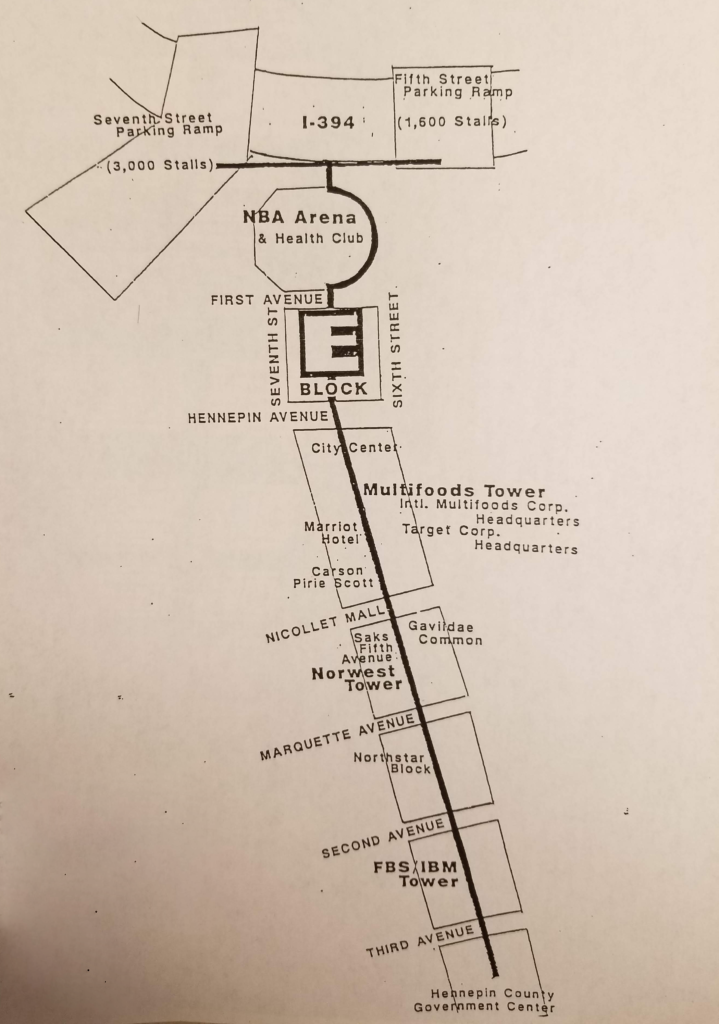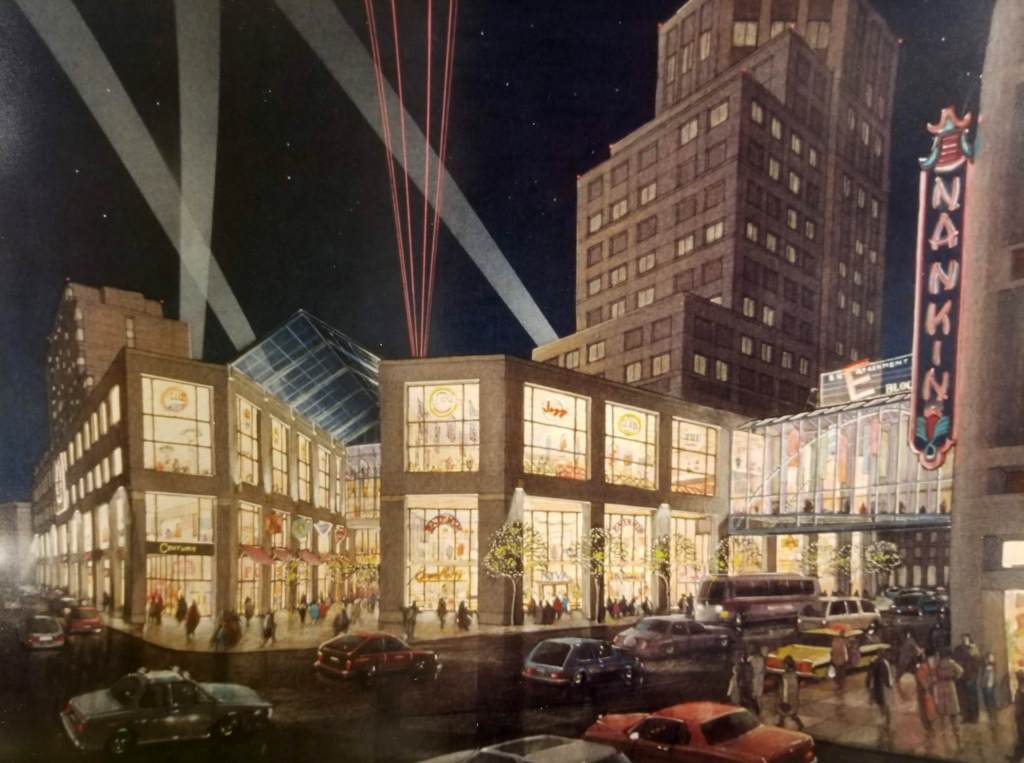All of my blogs have related to the years during my professional career in Minneapolis. During these sixty plus years, the physical environment has changed greatly. Some of these changes to streets or parks or public buildings have been the result of public decisions and community needs. Most of the changes, however, have resulted from private initiatives. New buildings or expansion to meet business needs are common. Most other private building construction occurs to meet investment purposes – residential buildings (apartments or condominiums) or commercial buildings for restaurants or retail use.
All construction in Minneapolis requires a lengthy and complicated review process before actual construction can proceed. Zoning and city ordinance approval, planning department support, environmental review, and area neighborhood reviews are all necessary prerequisites before construction. Additional requirements are necessary if the public sector is to be involved – on project financing or any kind of public participation in the proposed project.
Following my development successes in Loring Park with Greenway Gables and in Uptown with Calhoun Square, I was encouraged by several elected officials and many private citizens and organizations to redevelop Block E on Hennepin Avenue. Block E – the block between 6th and 7th St and, between Hennepin Ave and 1st avenue North was the number one trouble spot in Minneapolis! While many years earlier the block was the home of the 620 club (“where turkey is king”) and other legitimate and popular establishments and shops, Block E now spelled trouble! Moby Dicks bar and Shinders were the best known trouble spots. Determined to deal with the problems, the City took the actions necessary to eliminate the problems by purchasing all of the properties on the block and then looking for a development solution.
Developers were hesitant – Hennepin Ave was considered risky. Developers and most businesses were unwilling to develop or even locate north of Hennepin. The realities occurring on Hennepin Ave and the negative perception of the area north of Hennepin were causing developers to avoid the opportunities to proceed with any developments.
In order to attract a developer for Block E, the city of Minneapolis created several marketing “gimmicks/promotions.” The most creative was that the blocks from 6th to 7th stretching all the way from the Hennepin County Government Center to Block E on Hennepin should all be part of the “Skyway Highway.” The parking ramps built as part of the Interstate 94 roadway system would then be the culmination of the “Skyway Highway.”

Skyway Highway
E Block will be the final link in Minneapolis’ “SKYWAY HIGHWAY,” downtown’s primary crosstown artery.
Suddenly, Harv and Marv appeared – and so did Ray. Harvey Ratner and Marv Wolfsenson (longtime real estate partners) were submitting a proposal to be the owners of a new NBA professional basketball team (later named the Timberwolves) to be located on Block E.
Approximately at the same time Ray Harris – I decided that I would submit a proposal to be the developer of Block E! My proposal would be to build a block that would be the Entertainment Center of Minneapolis – located on Hennepin Ave.
The sudden developer competition was shocking. The Block E trouble spot in Minneapolis with no developer interest and suddenly a site with two developers vying to be designated.
Both developers had numerous supporters – and detractors. Sports enthusiasts wanted basketball, others preferred the restaurants, retail, nightclubs, bookstores and the entertainment center – whatever that meant. Competition became heated – Harv and Marv were determined to play basketball on Block E. I wanted to create a great entertainment center for Minneapolis to turn Block E around. – to E Block – that would be the name. E Block for Excitement, Entertainment, Energy, Eating, and Enthusiasm.
The location of E Block was perfect – skyway connections, adequate nearby parking, an expanding adjacent warehouse district (ultimately named North Loop). I wanted E Block to serve as the focal point for downtown activity – as the missing link between north of Hennepin, the I-94 highway system, and over 6,000 parking spaces attached to I-94. The controversy disappeared when the basketball arena was officially located immediately north of E Block.
I searched for and hired one of the country’s most highly regarded architects of entertainment complexes, Jon Jerde of the Jerde Partnership located in Venice, California. Jerde eagerly took on the E Block challenge. He created a mostly glass plan for a multi-level retail and entertainment center with a parking facility, multi-screen cinema and potential for two towers – a hotel and office structure. The plan was perfect for the destination spelled out in the City of Minneapolis Metro 2000 plan – a place for impulse shopping, a place catering to the pedestrian coming to theater and sporting events, or the parking facilities serving the nearby offices and financial centers. It was to be the kind of place that would lure people downtown and entice persons already downtown, to stay longer. A place to connect the daytime and evening activities of a major American city.

The E Block plan created by Jerde elicited great enthusiasm by city officials and likely customers. The next challenge was to find and commit tenants that would be appropriate for a place that exuded excitement during the day and evenings. Equally challenging would be to locate and commit private financing for this unique place.
Tenant search began – restaurants, nightclubs, retail shops were contacted by leasing personnel – including RT Rybak who was in between his newspaper and political career. Project financing depended on committed commercial tenants and the financial credit of hotel and office tower tenants.
The search for tenants and private financing was complicated and widespread. The City of Minneapolis wanted to support E Block efforts but city officials began to put unrealistic deadlines on the approval process. This was not a typical project application. The tenant mix that would be appropriate for an entertainment center – that would bring excitement and enthusiasm and energy to the “party” were few and far between and their financial credit ratings were mostly not very high. This was to be a very special place with a unique mix of tenants to offer a unique mix of goods and services to the public; a project that was only mediocre was not going to be acceptable.
Project financing was especially difficult – given the unusual nature of the project; successful financing relied primarily on the financial credit of the hotel tower sponsor and the credit of the principal tenants of the proposed office tower – neither of which had been identified. To add to the complexity, an office tower on Block E would be the first tower developed on Hennepin Ave. or north of Hennepin Ave.
The E Block management needed more time to lock down tenant and financing commitments – and city officials needed to be patient. Negotiations continued – with prospective tenants – with prospective leaders – with city staff and various council members. Although everyone agreed that E Block was the right project – at the right time and the right place – and no other development had been proposed for Block E – the city set a deadline for further negotiations and refused to consider any financial support from the city.
Further discussion between the E Block developer and city officials failed to provide additional time. E Block could not/did not provide enough tenant and financial commitments. E Block was not going to happen!
Block E languished without a developer for several years. Finally the city responded to an out of town developer and provided almost forty million dollars in financial assistance. Block E was developed – absent the excitement, enthusiasm, and energy – a great opportunity missed and lost!

Happy Birthday Ray! Hope to stop in and say hello when the weather improves.
Best wishes,
Jim Wickham